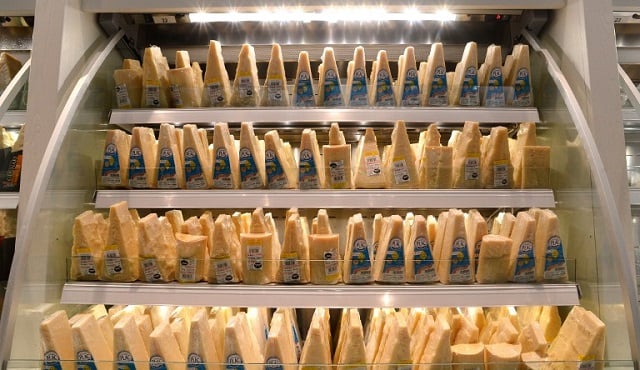The criminals had targeted cheese factories, shops and homes in the Emilia-Romagna region, known for its top quality produce and brands including Parmigiano-Reggiano cheese and Modena's balsamic vinegar.
Their hauls had included 16,000 bottles of fine wines, worth a total of around €100,000, as well as €80,000 worth of Parmigiano-Reggiano, a protected product which is only produced in the countryside around Modena, Bologna and Parma.
Ten people were arrested in the early morning swoop, Modena police said in a statement, while one other suspect remains at large.
Police launched Operation Wine and Cheese, as it was called, following a series of high-value food thefts between 2015 and 2016.
Officers discovered that one member of the gang, who had professional links to agricultural businesses in the region, passed on the information to his accomplices, who then carried out the thefts.
The video below shows one of the gang's thefts in action.
READ ALSO: Sicily blackmailers threatened to destroy 230 bottles of fine wine
Food theft is a widespread problem in Italy – and parmesan a popular target for robbers.
In total, €6 million worth of the prized cheese was stolen between 2015 and 2016, according to the Italy's Parmigiano Reggiano Consortium.
Just one 40-kilogram wheel of the 24-month-aged cheese is worth €500, and the fact that rural producers are often ill-equipped when it comes to security measures makes them soft targets.
Although each wheel carries a traceable watermark, it is likely that thieves simply cut up the cheese before selling it at provincial markets.
In order to counteract the phenomenon, police last year announced plans to step up night patrols in countryside areas and stopping and searching vans in a bid to catch gangs of cheese robbers.
Italians are very protective of their precious parmesan, which in addition to thieves, also faces threats from the online auction world. Online sales of fake versions of the cheese – which is protected by EU food policy – cost producers millions each year.
And in 2015, the consortium of Parmigiano Reggiano producers was forced to take legal action against adult video website PornHub over a “vile and offensive” ad campaign which referred to the luxury cheese.



 Please whitelist us to continue reading.
Please whitelist us to continue reading.
Member comments